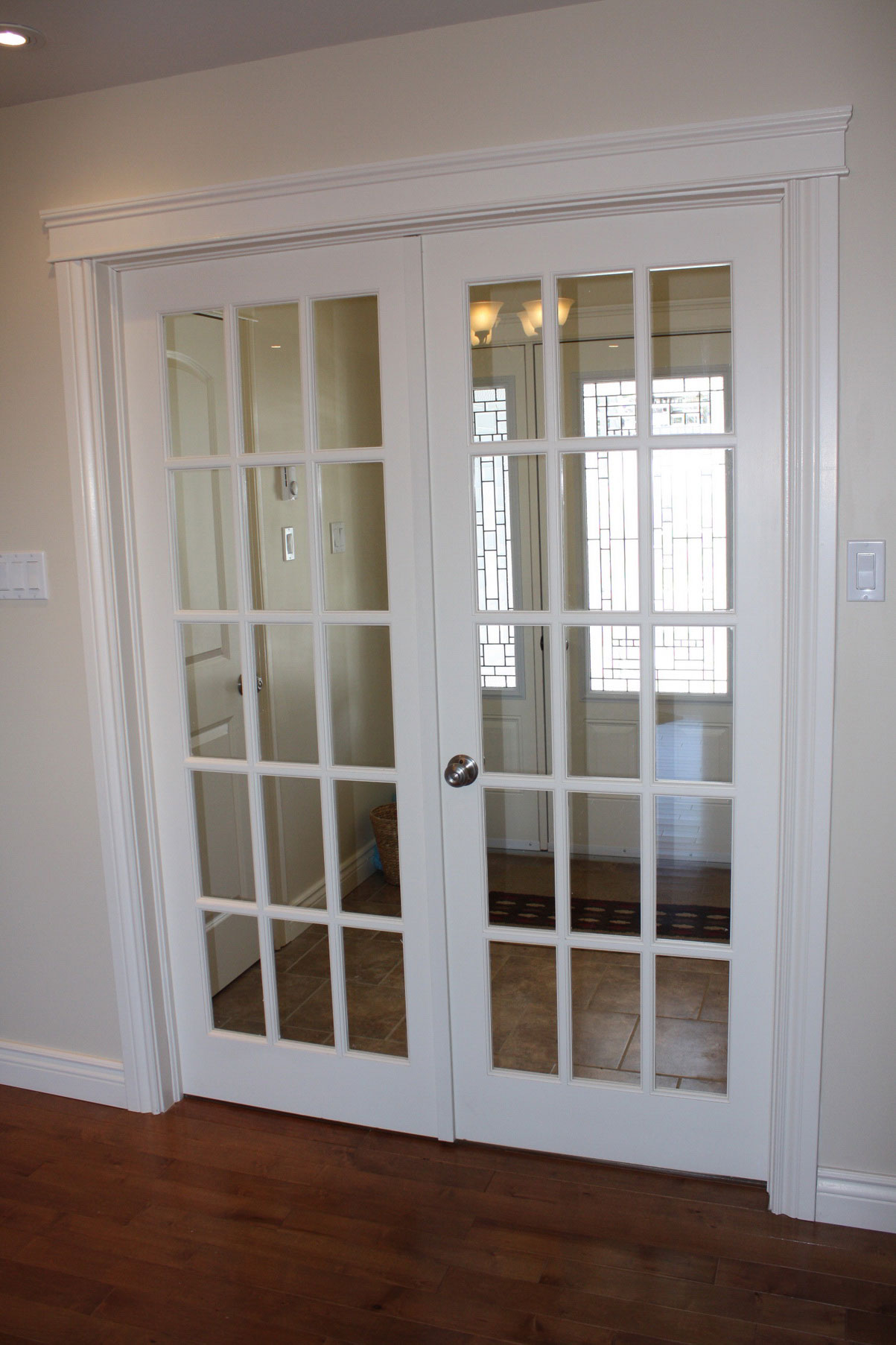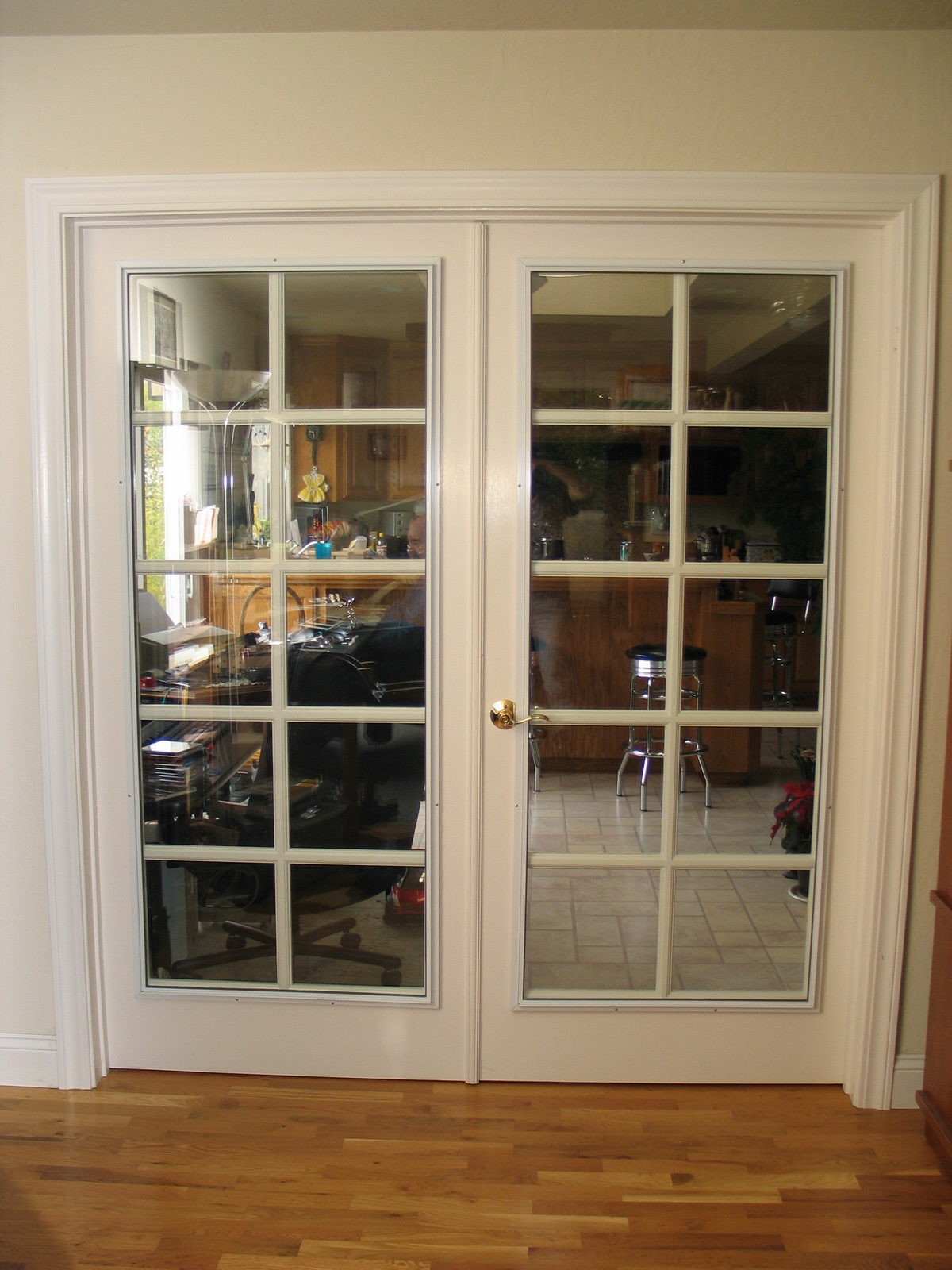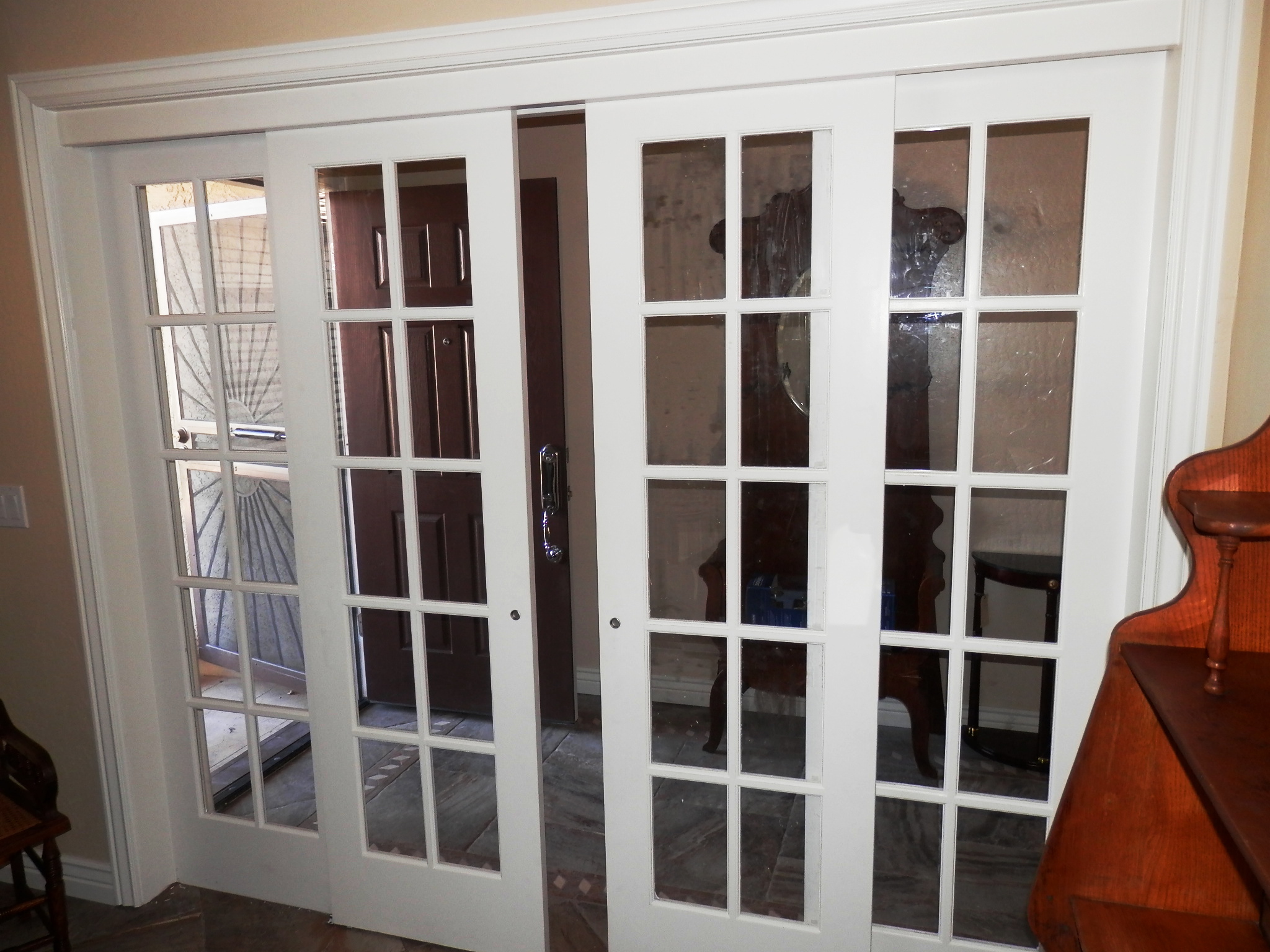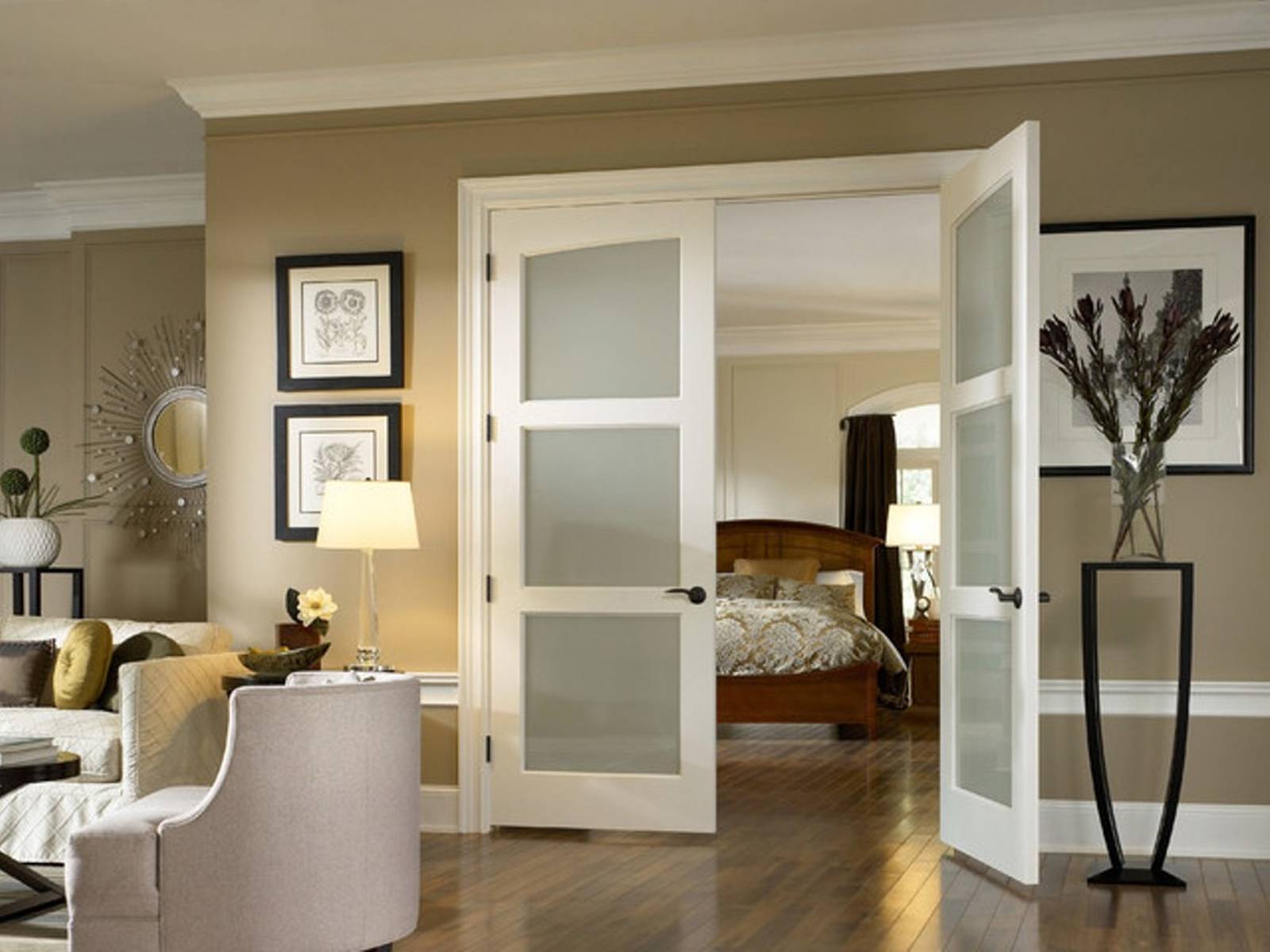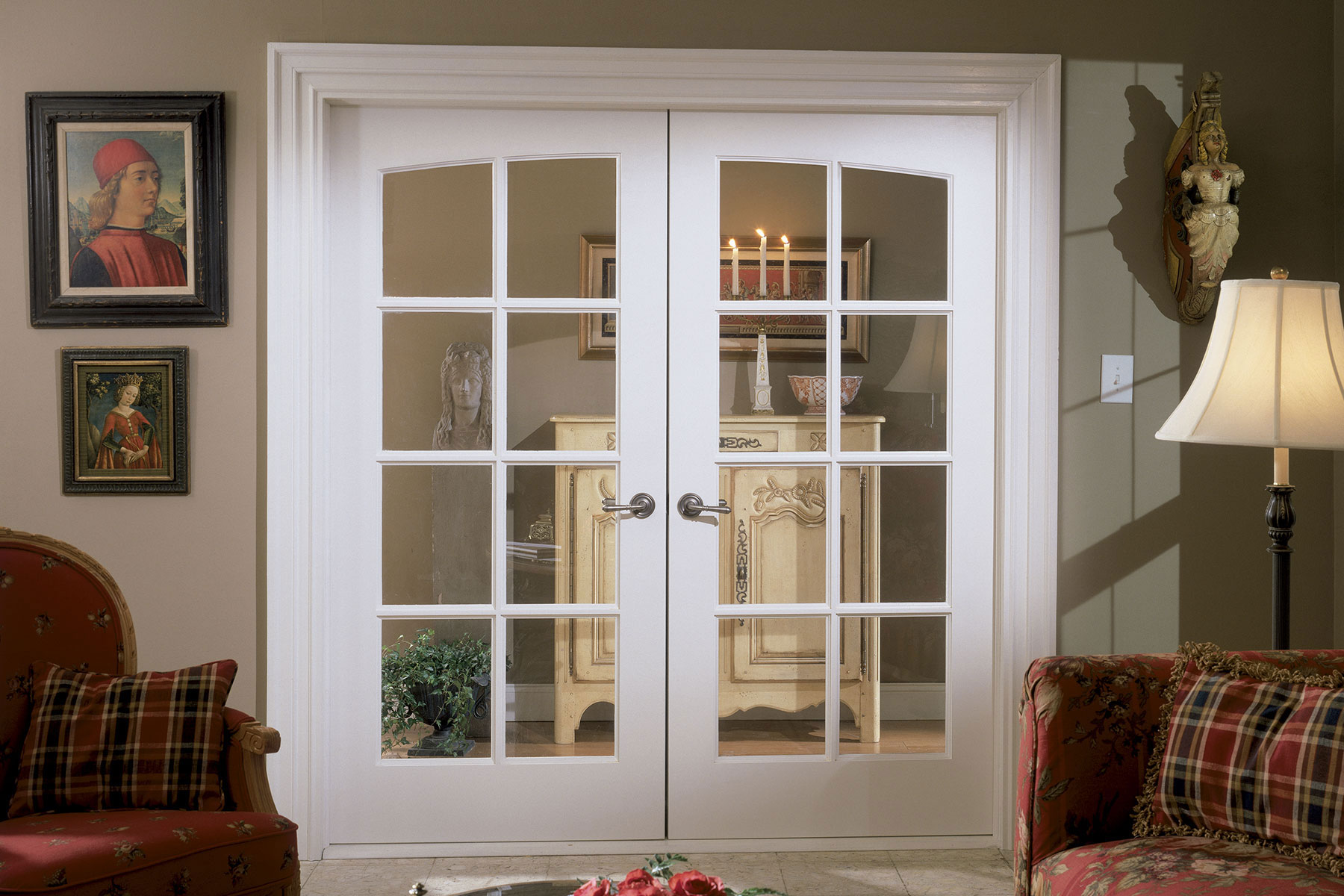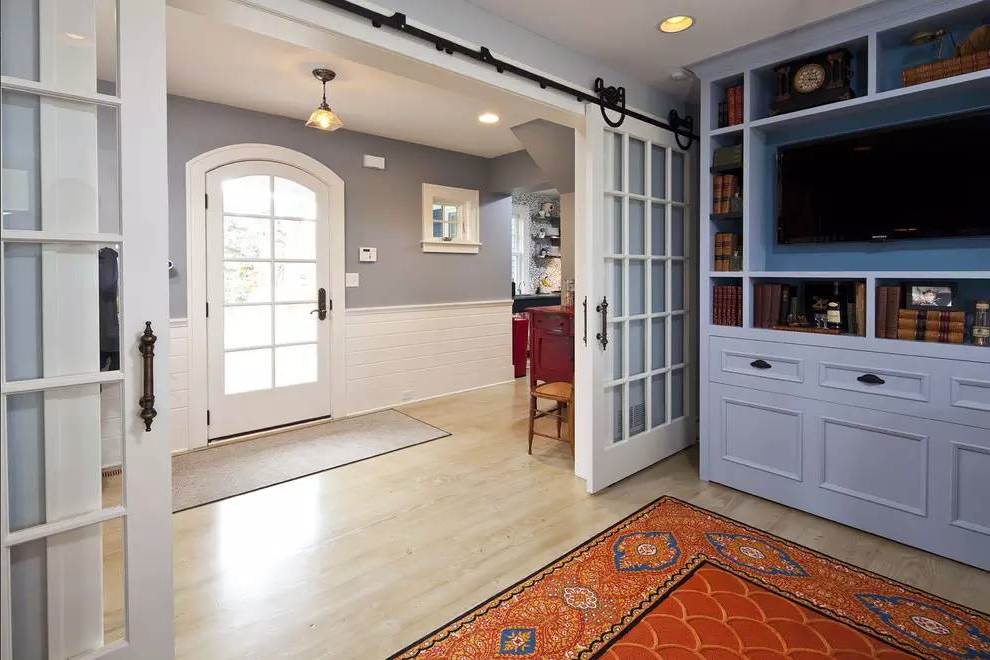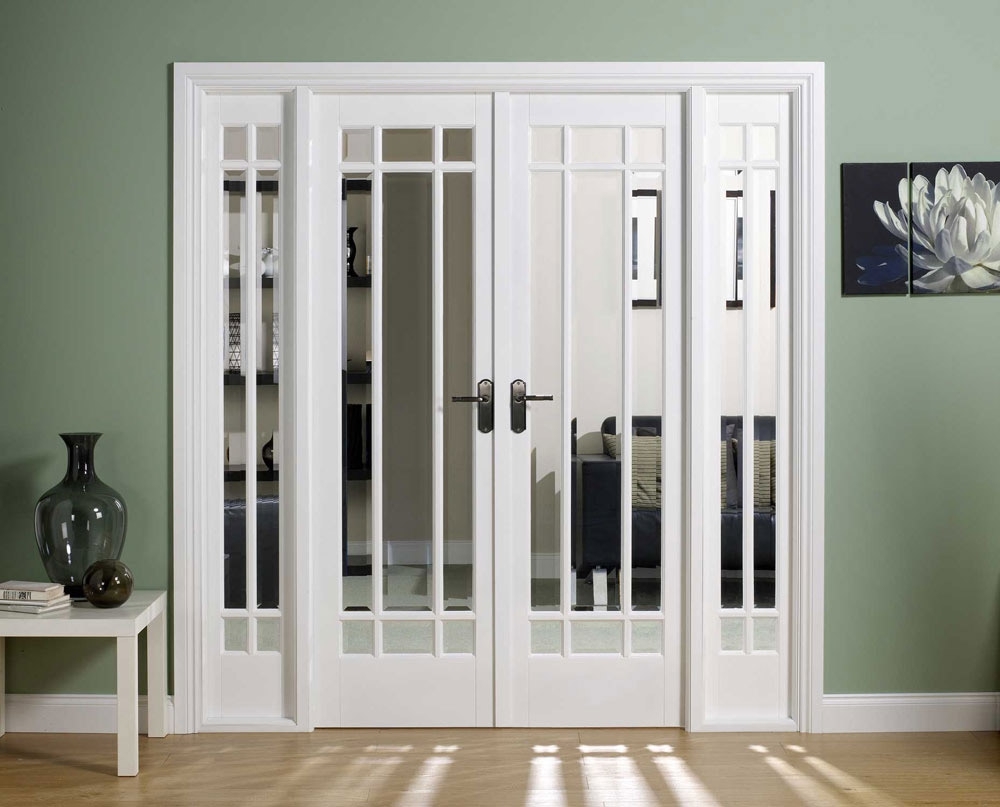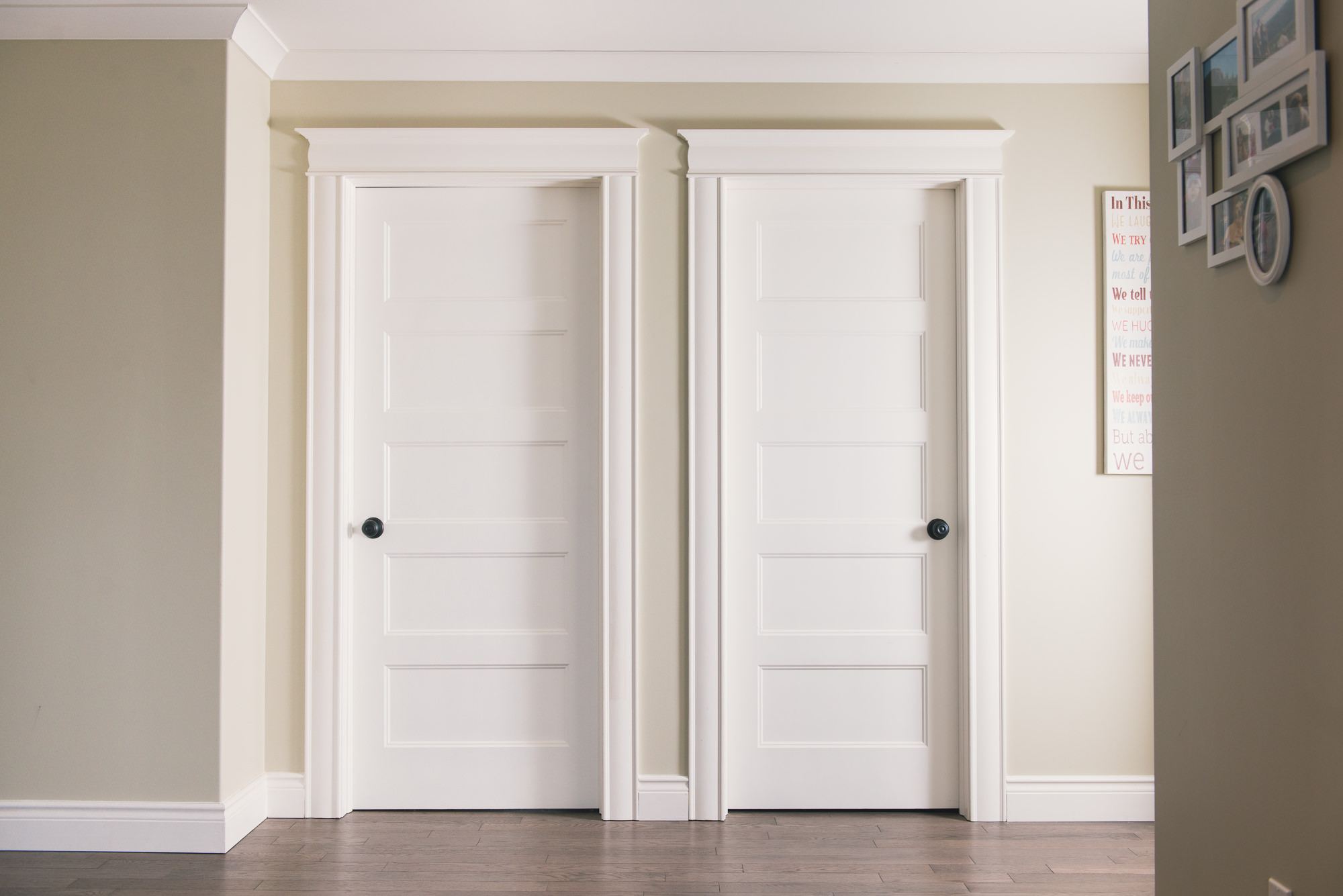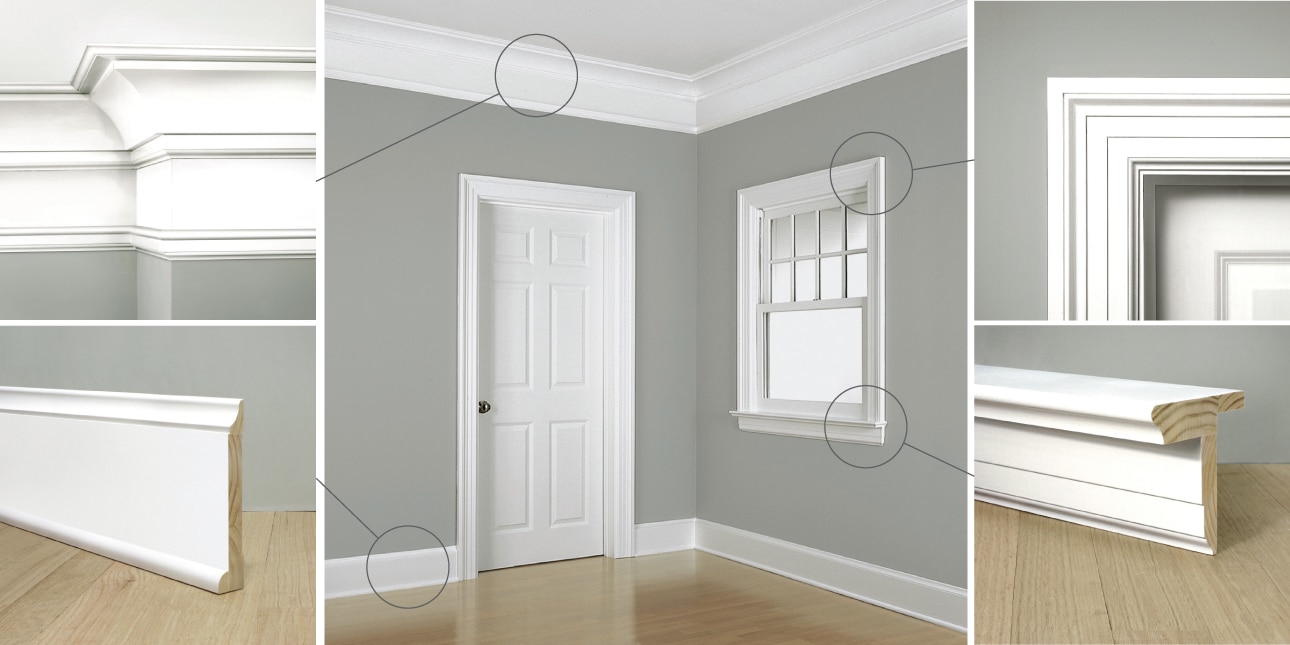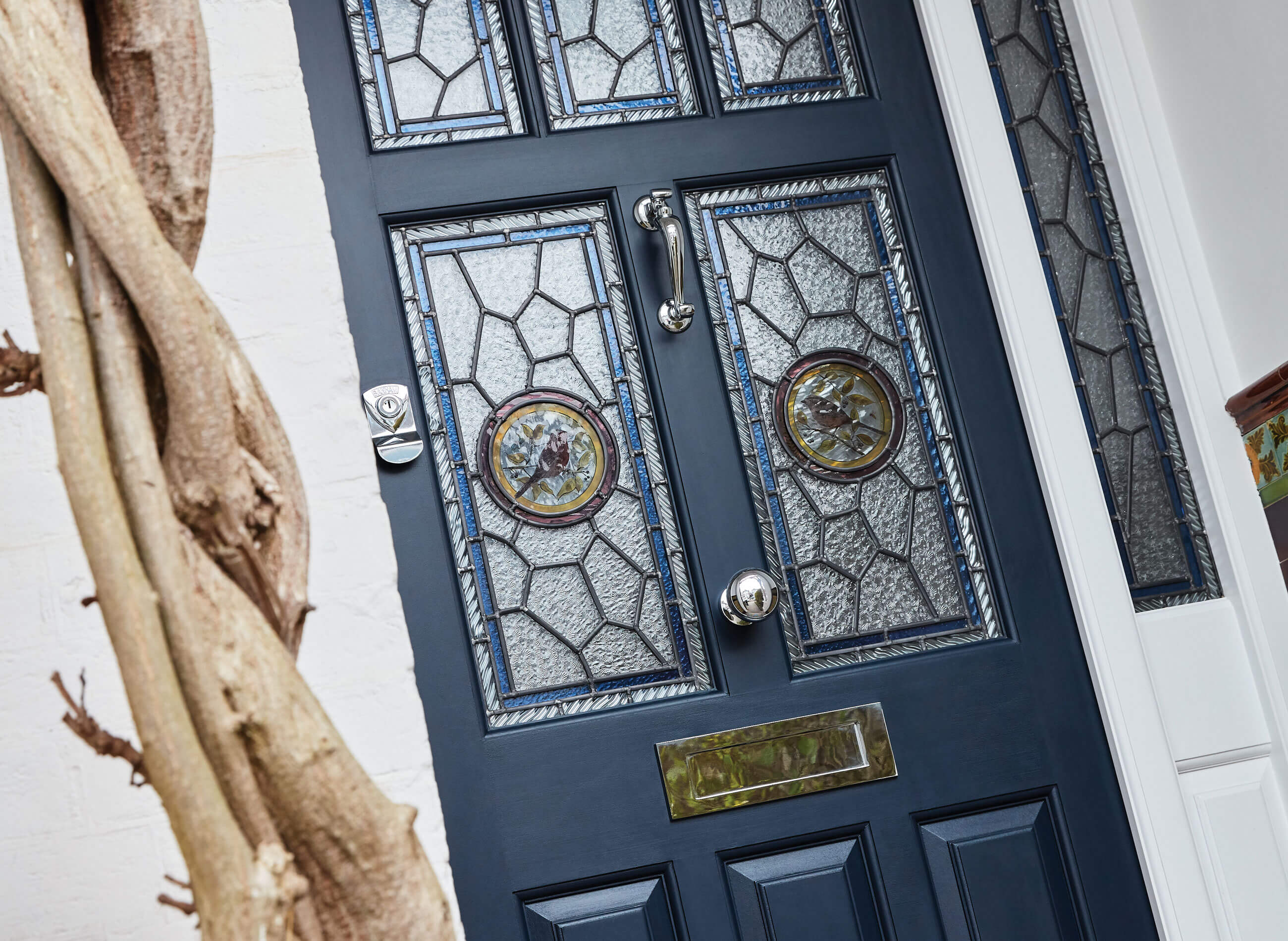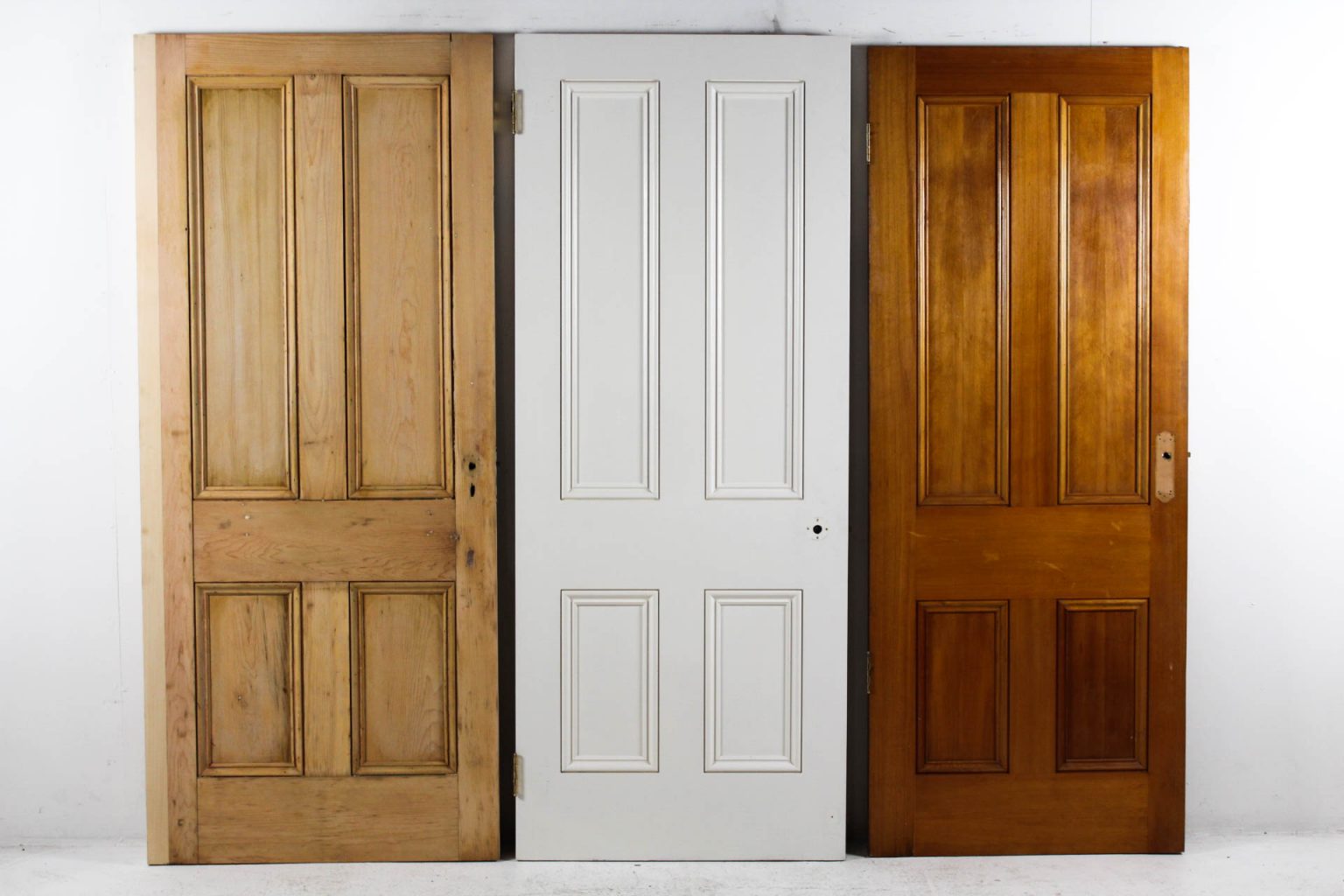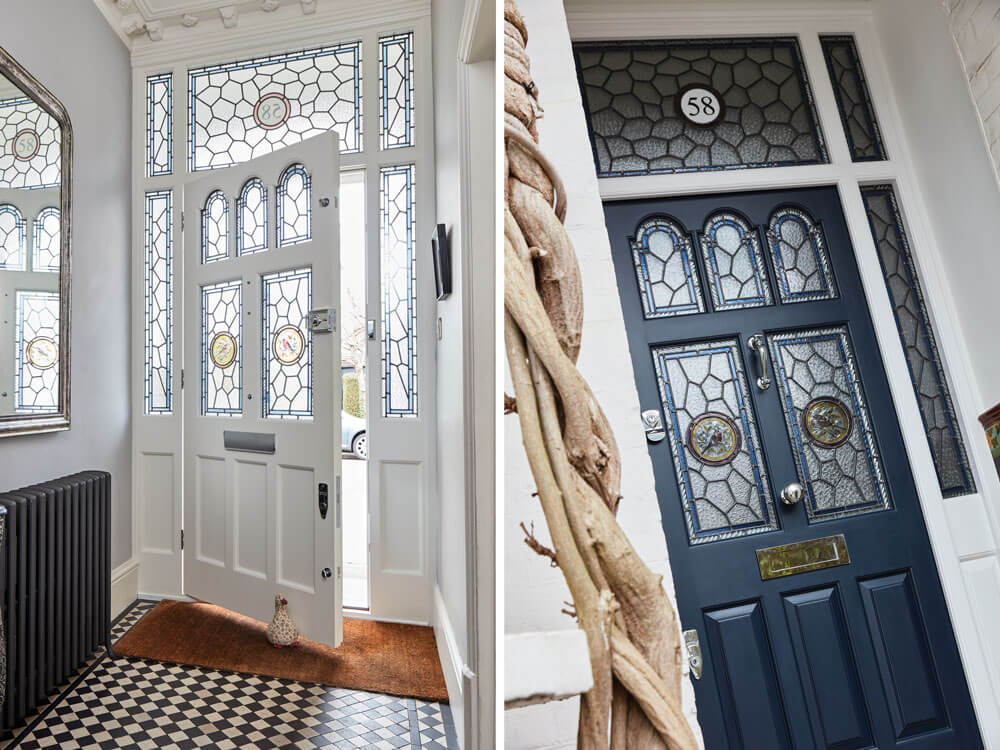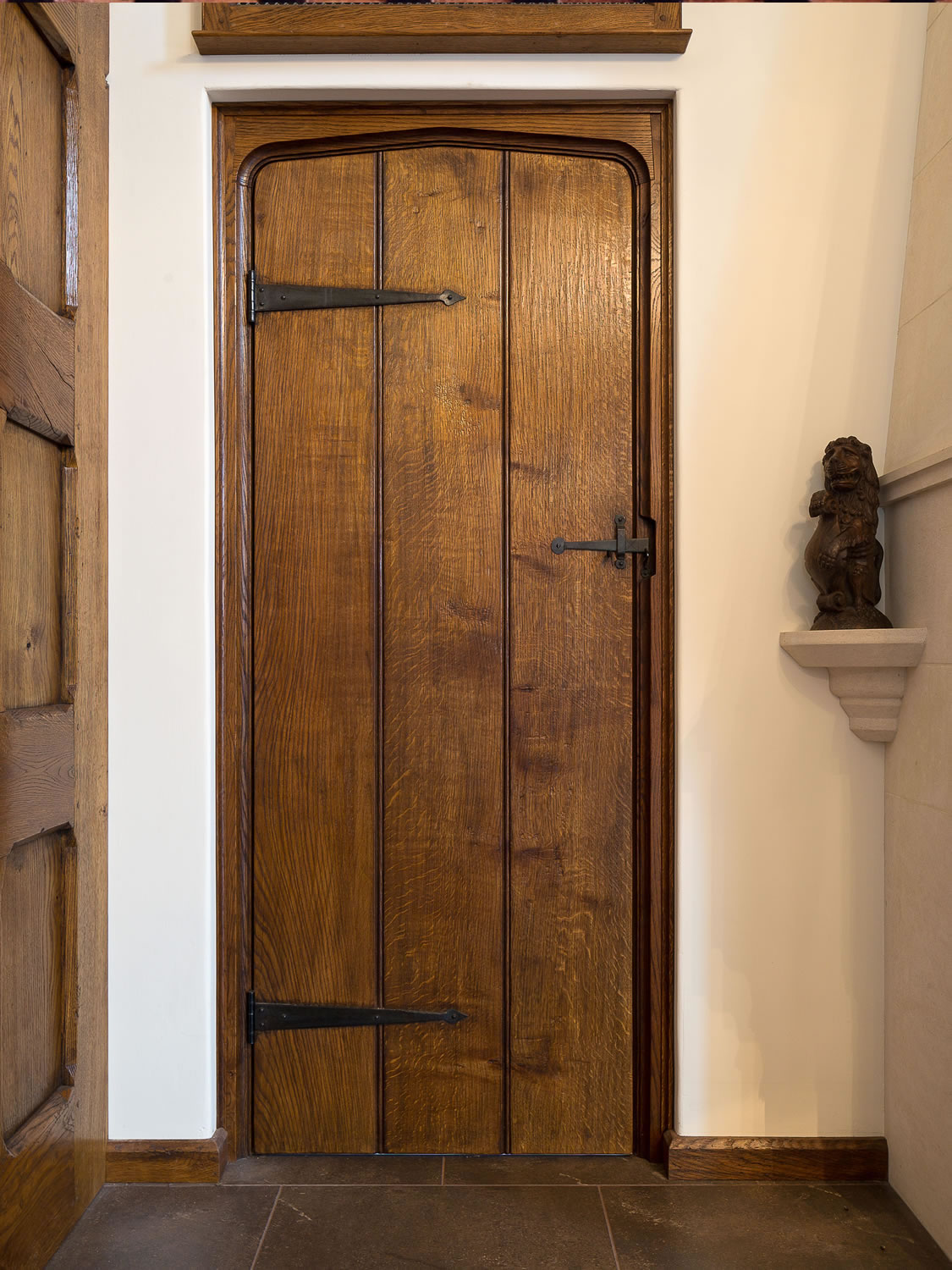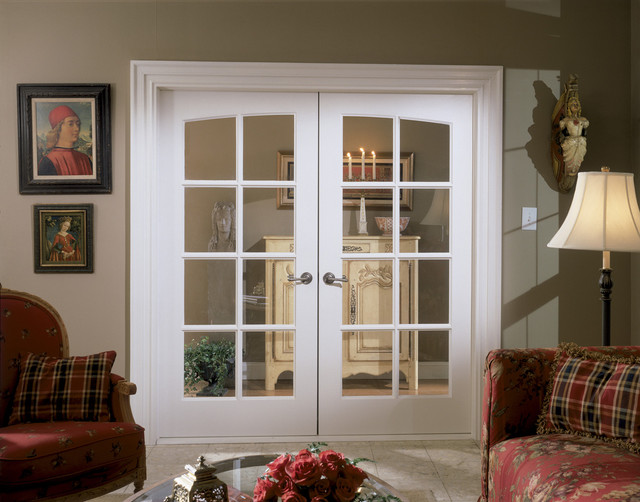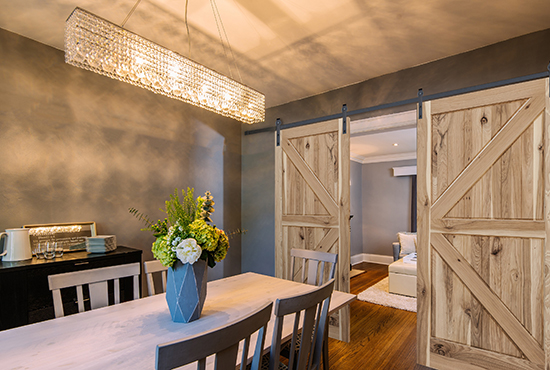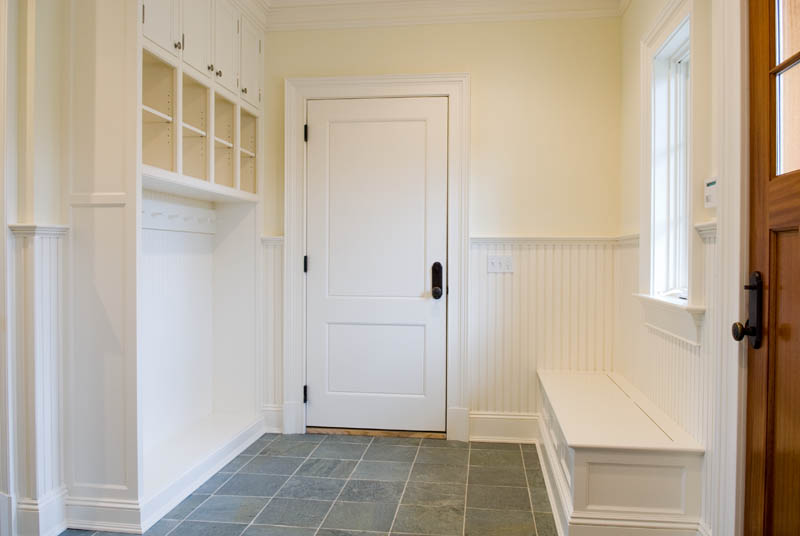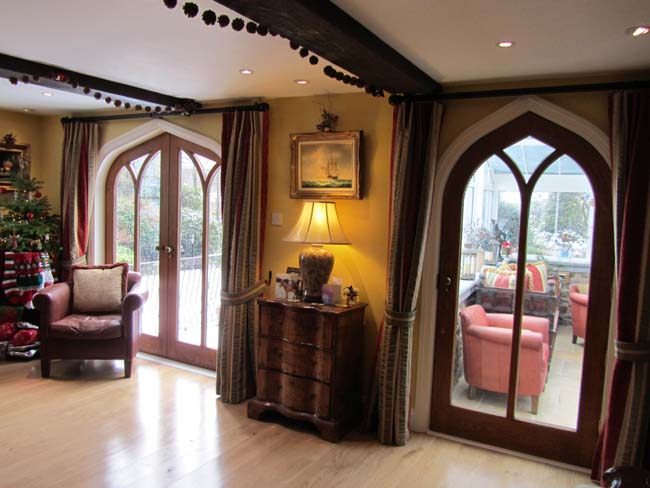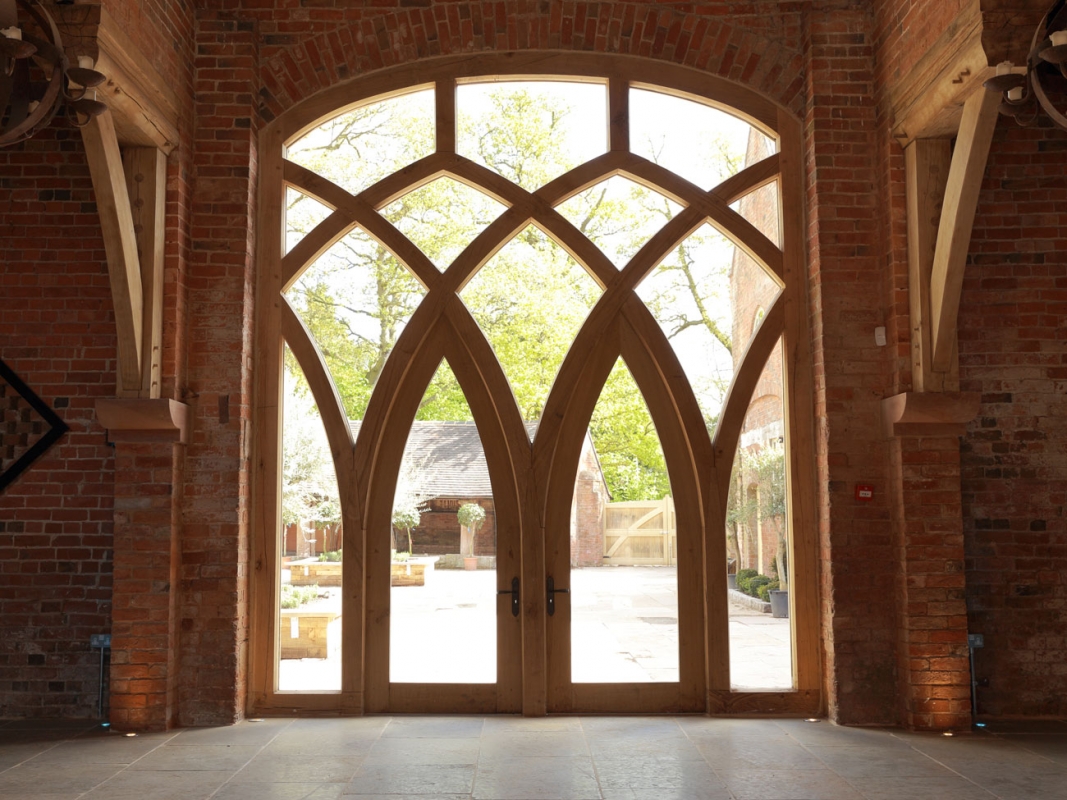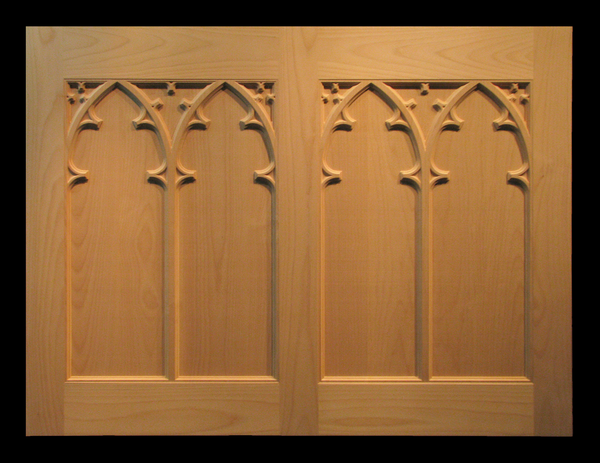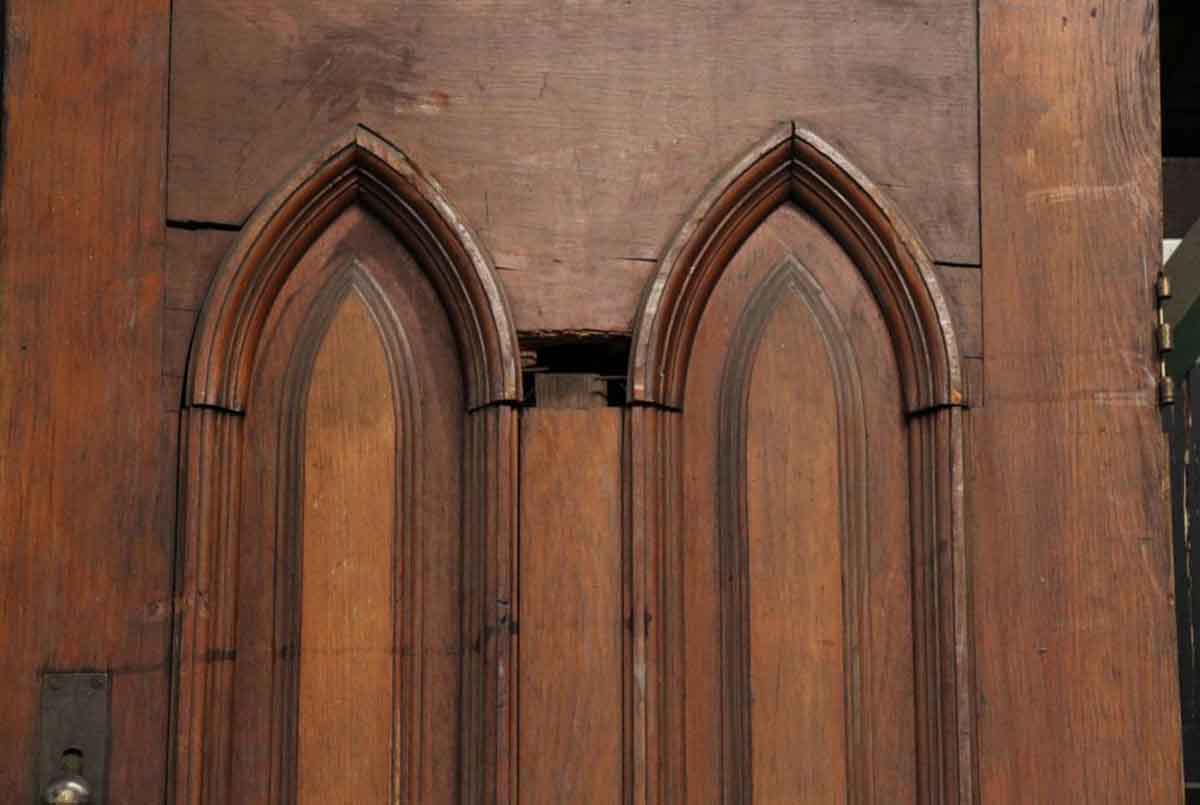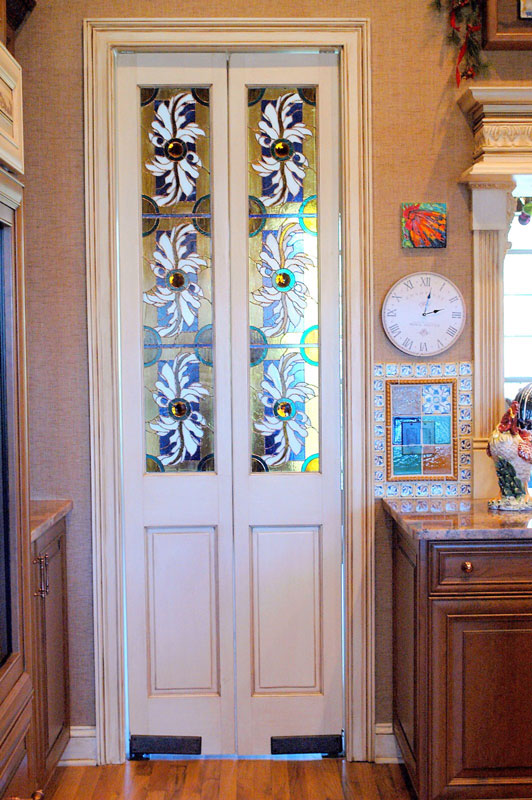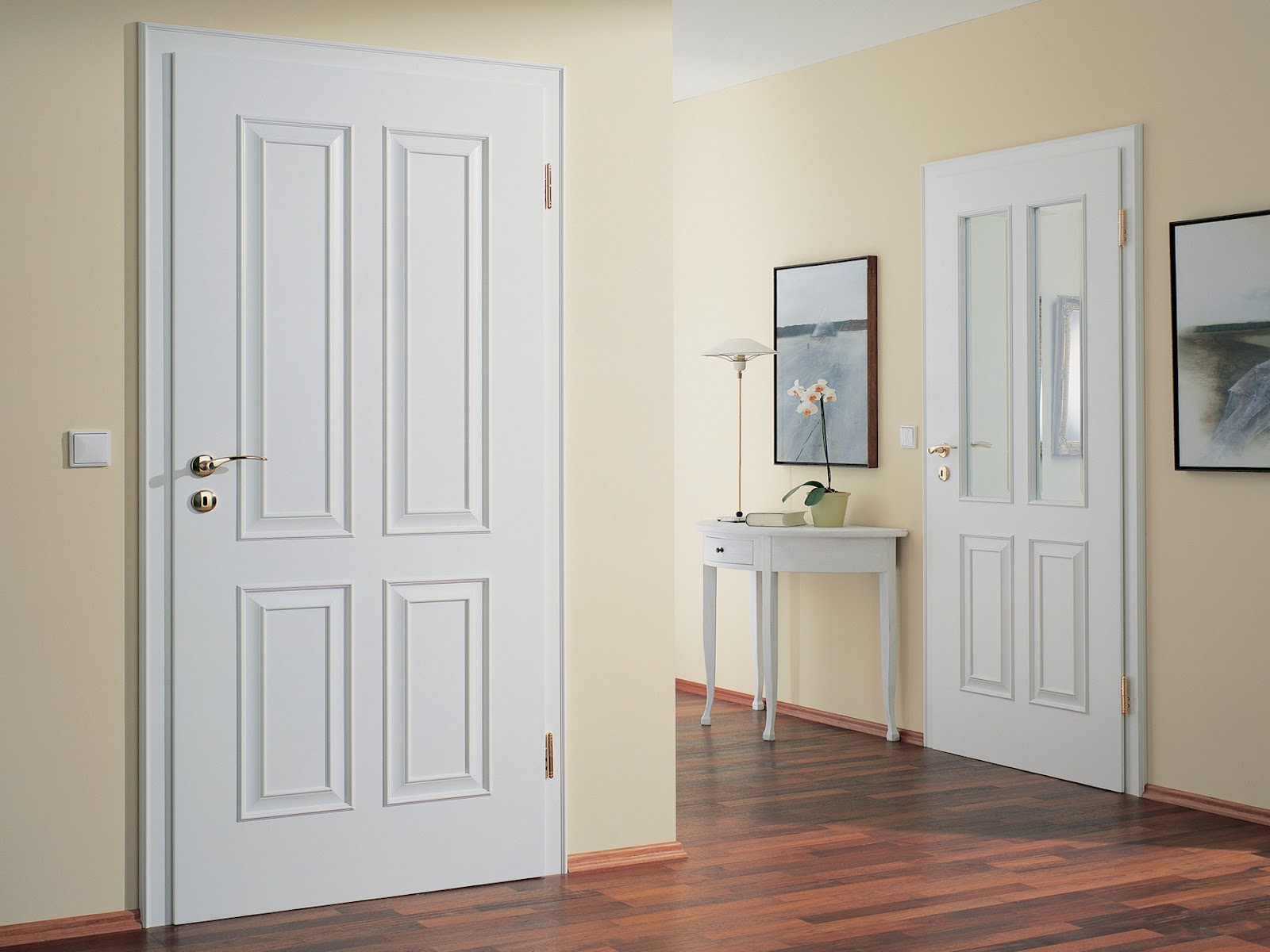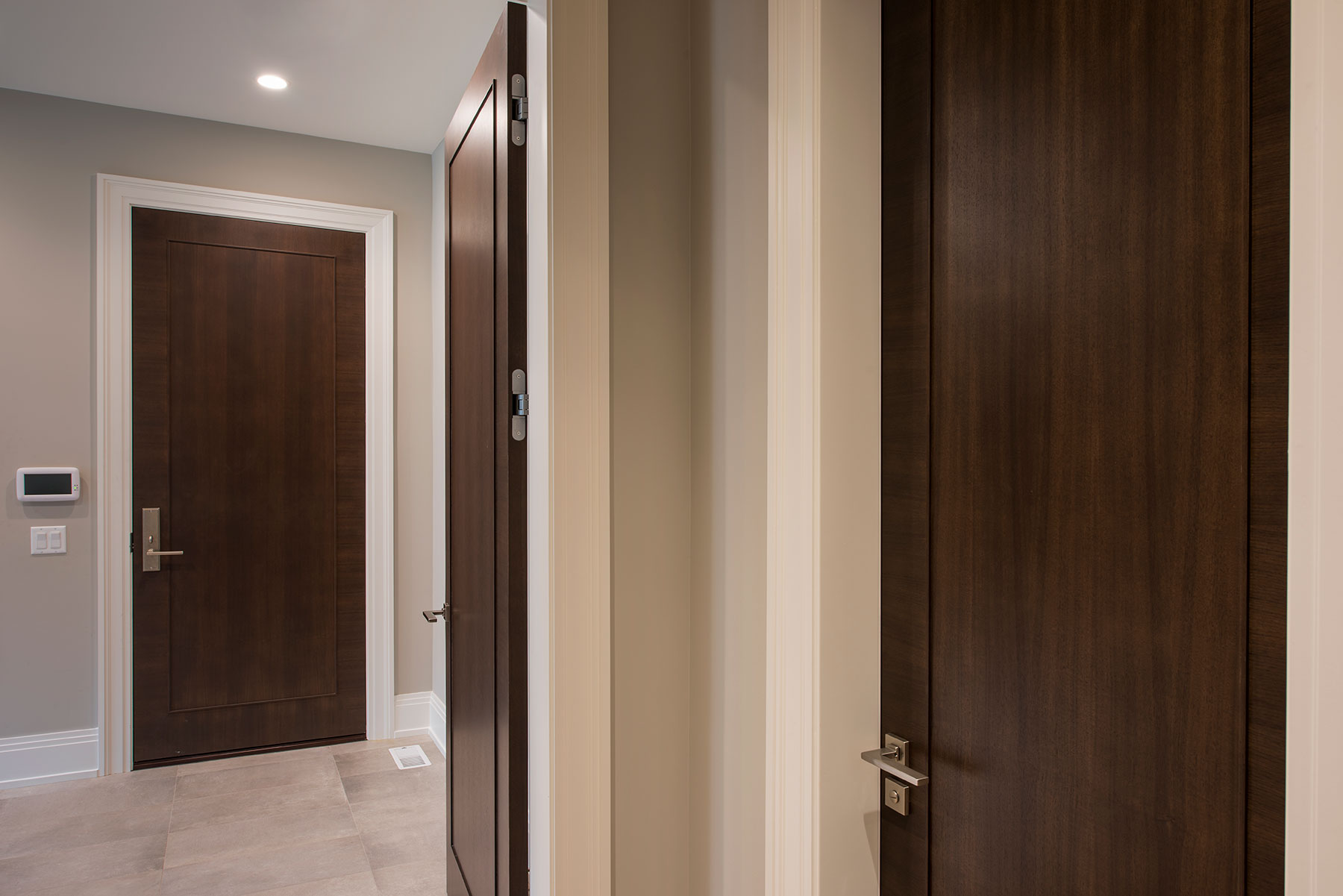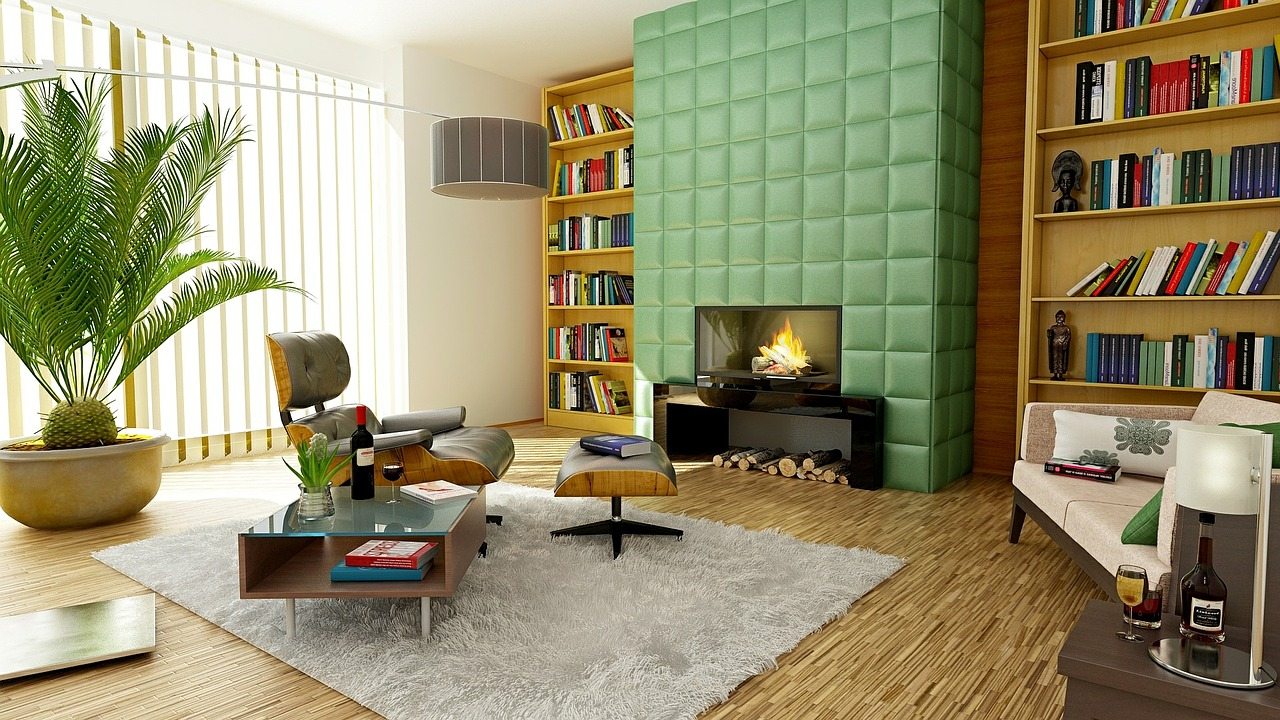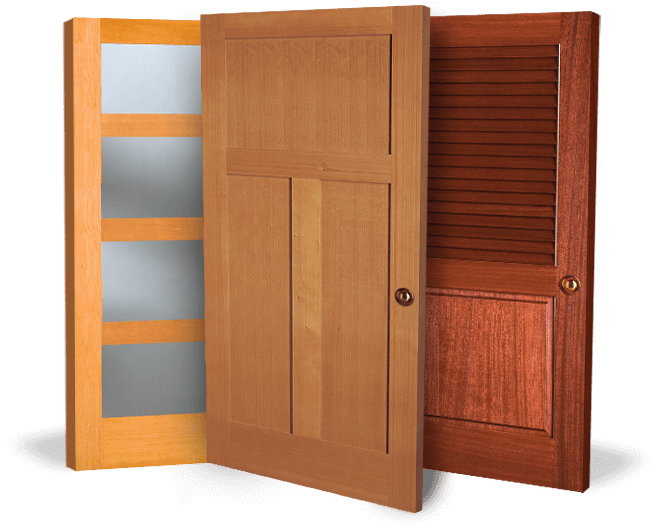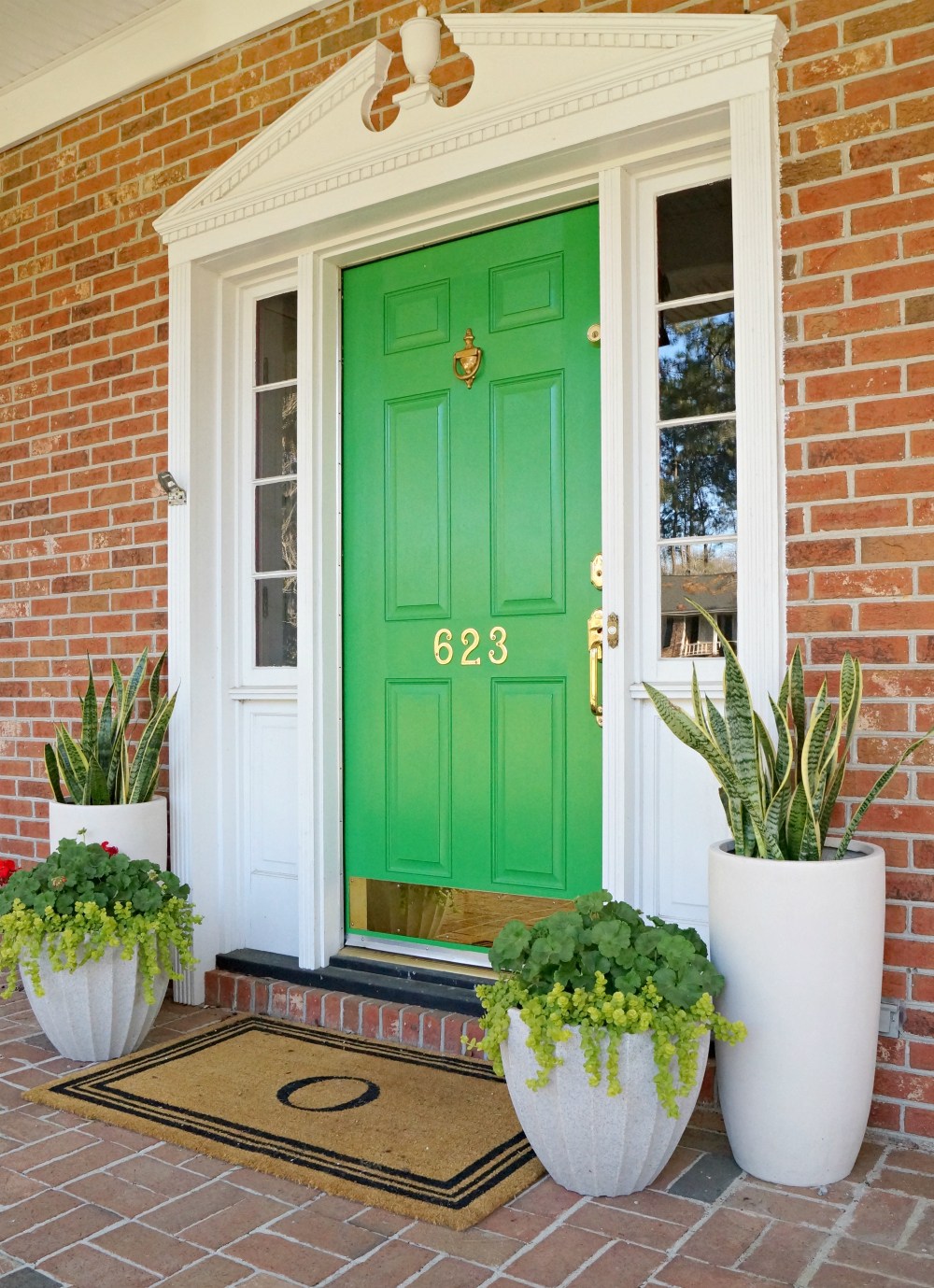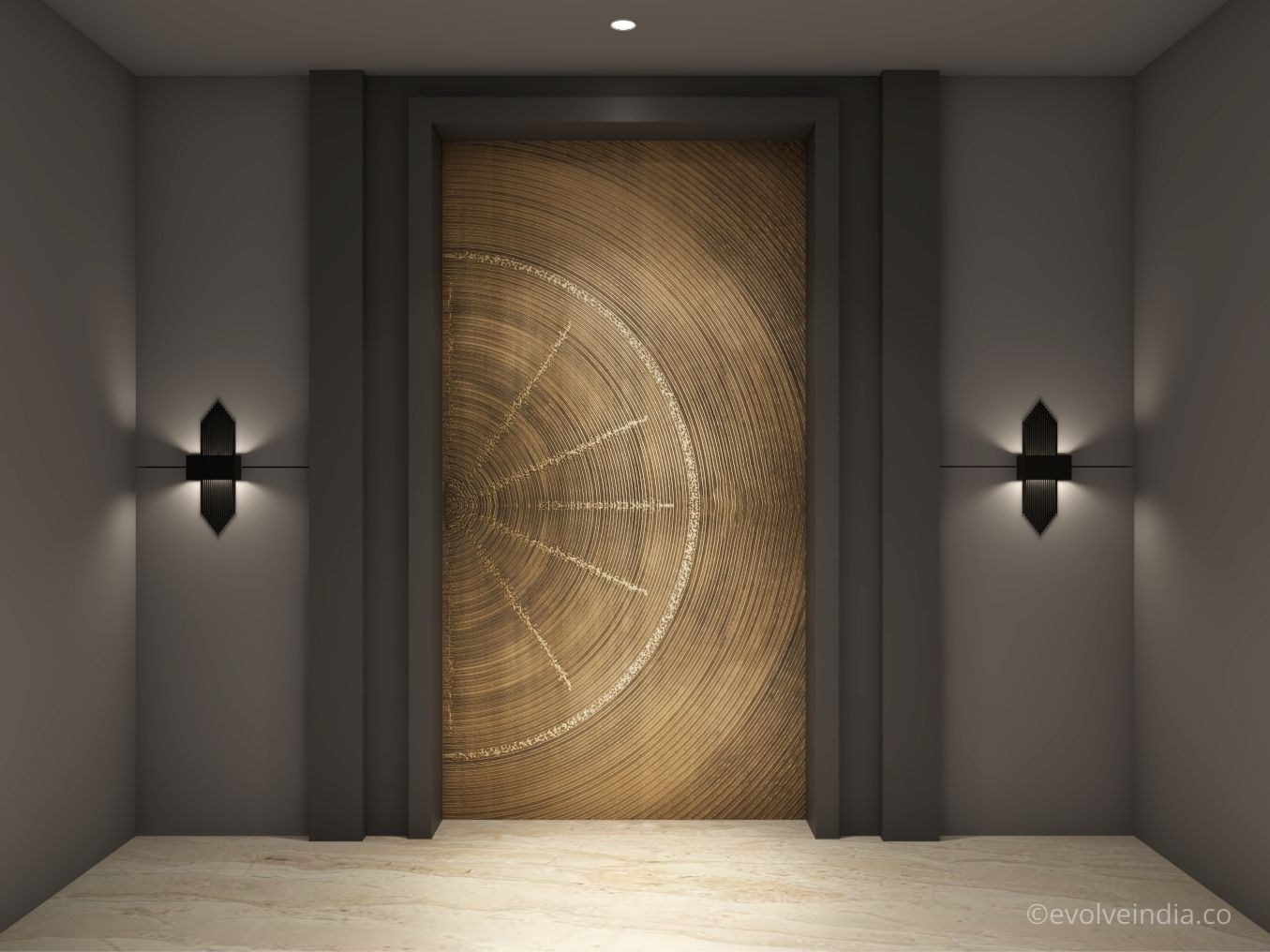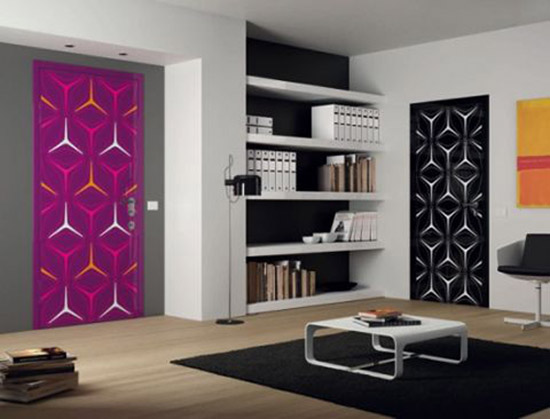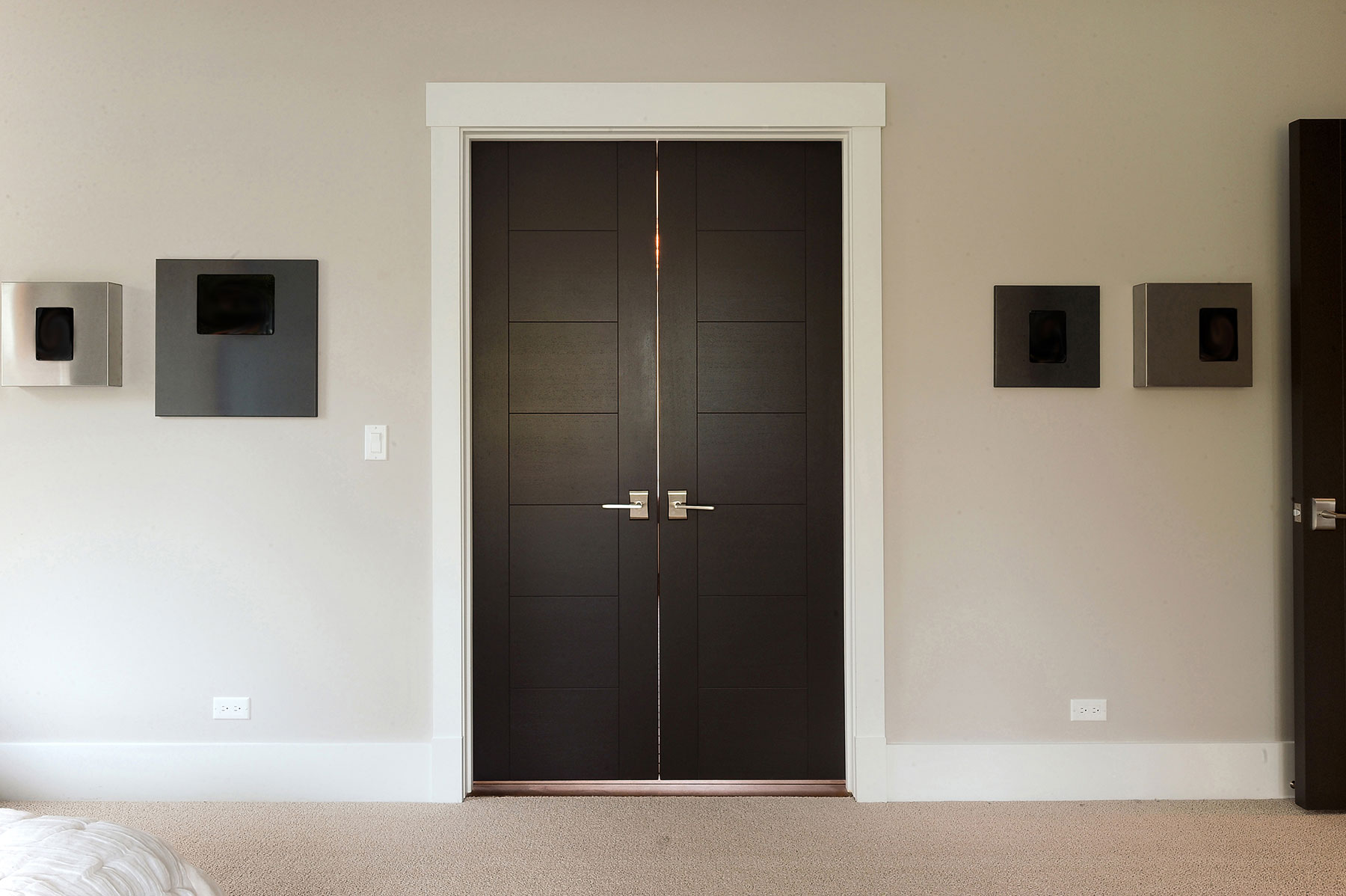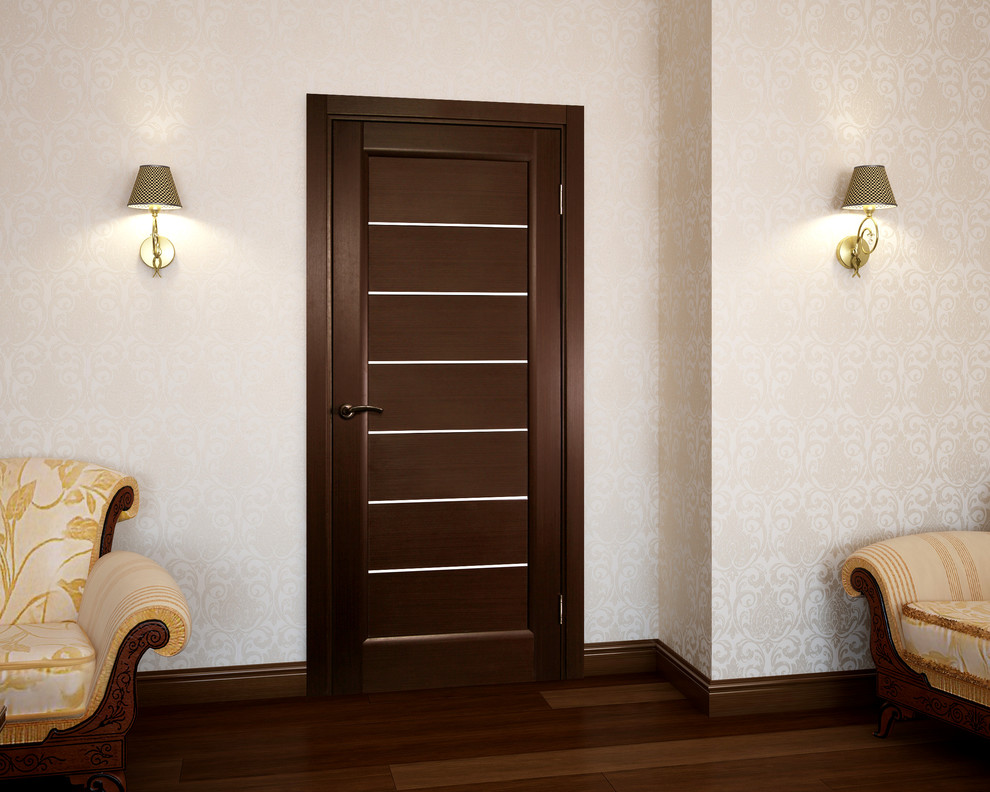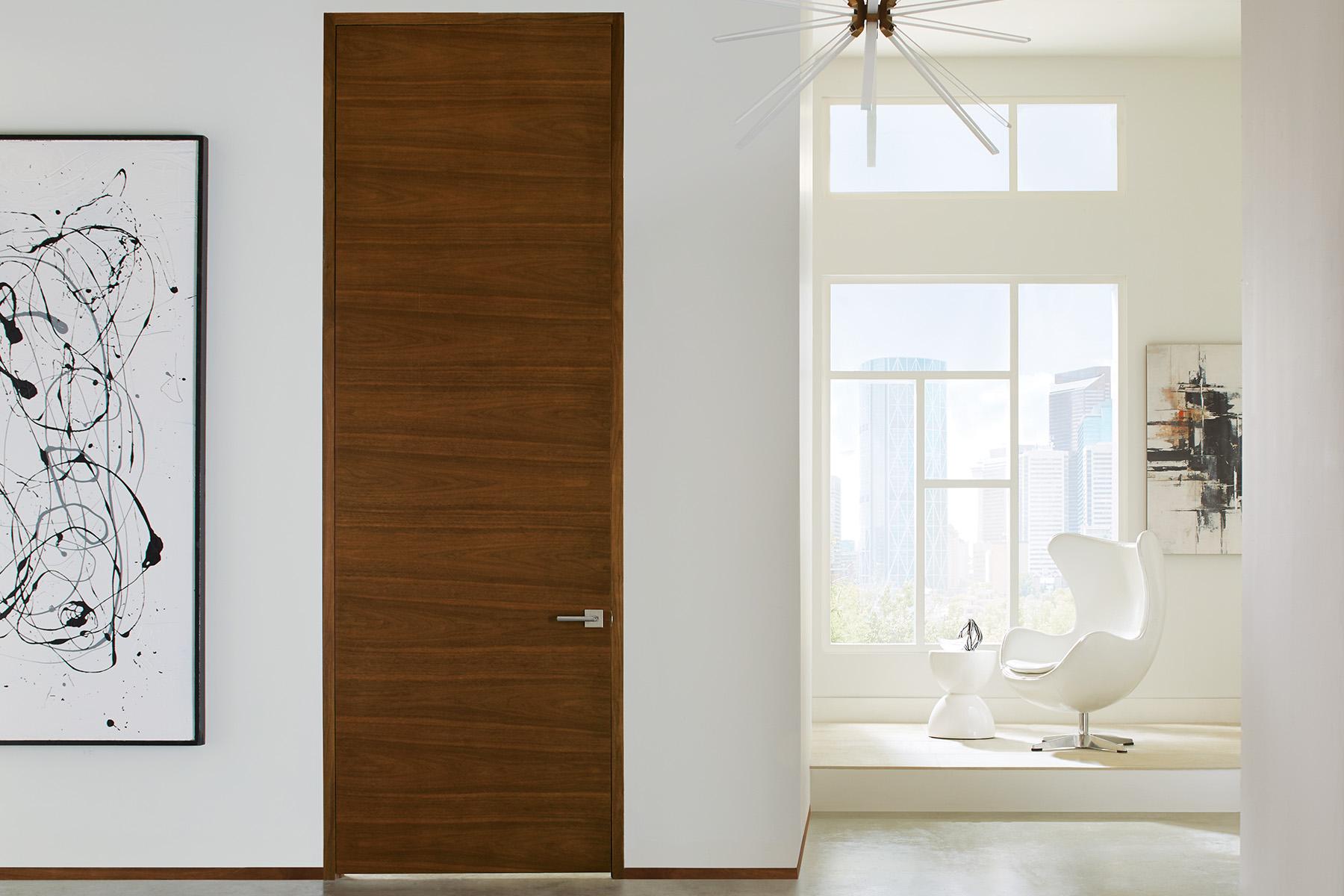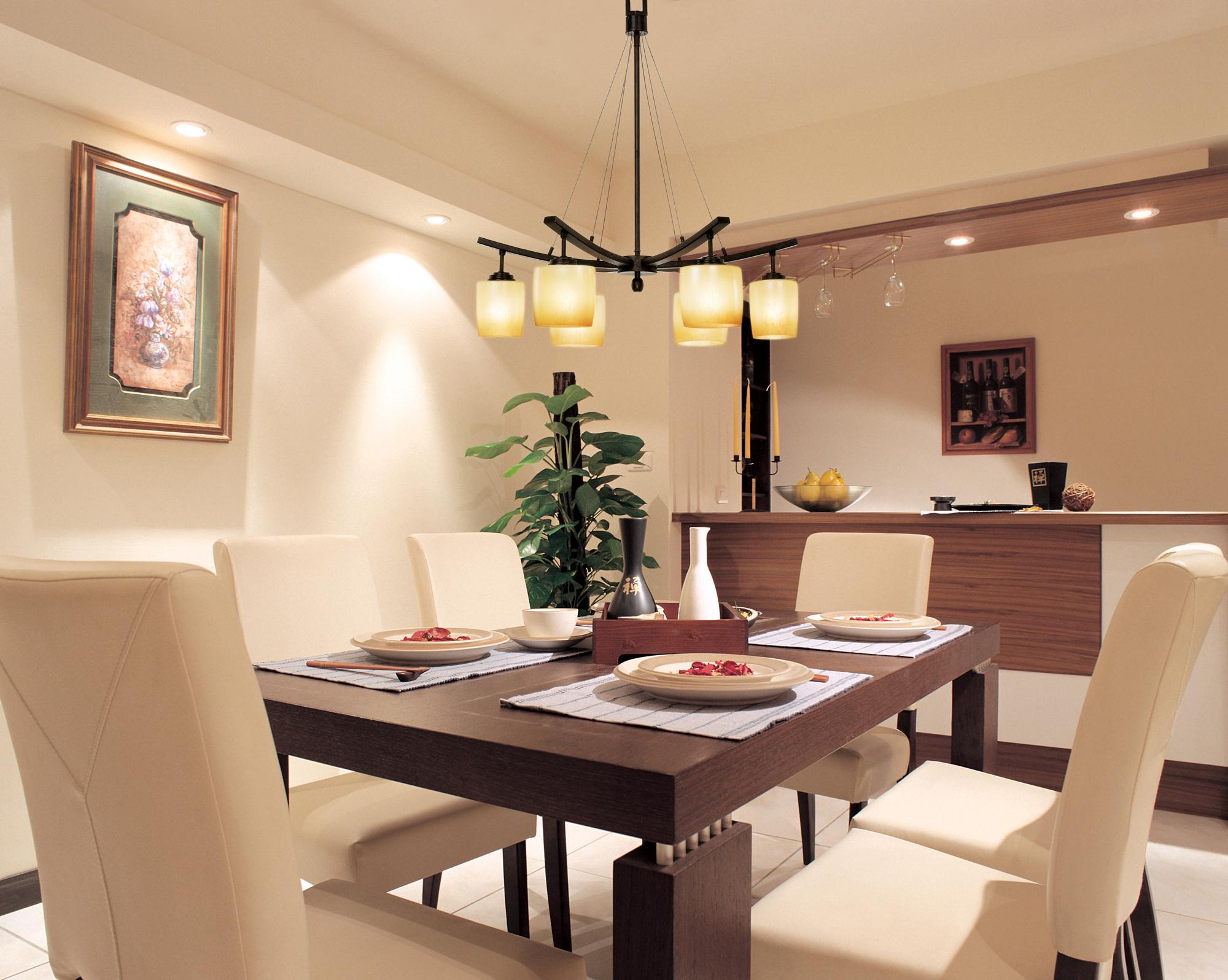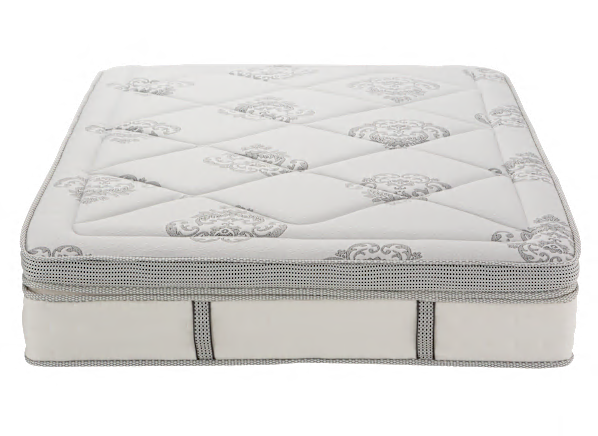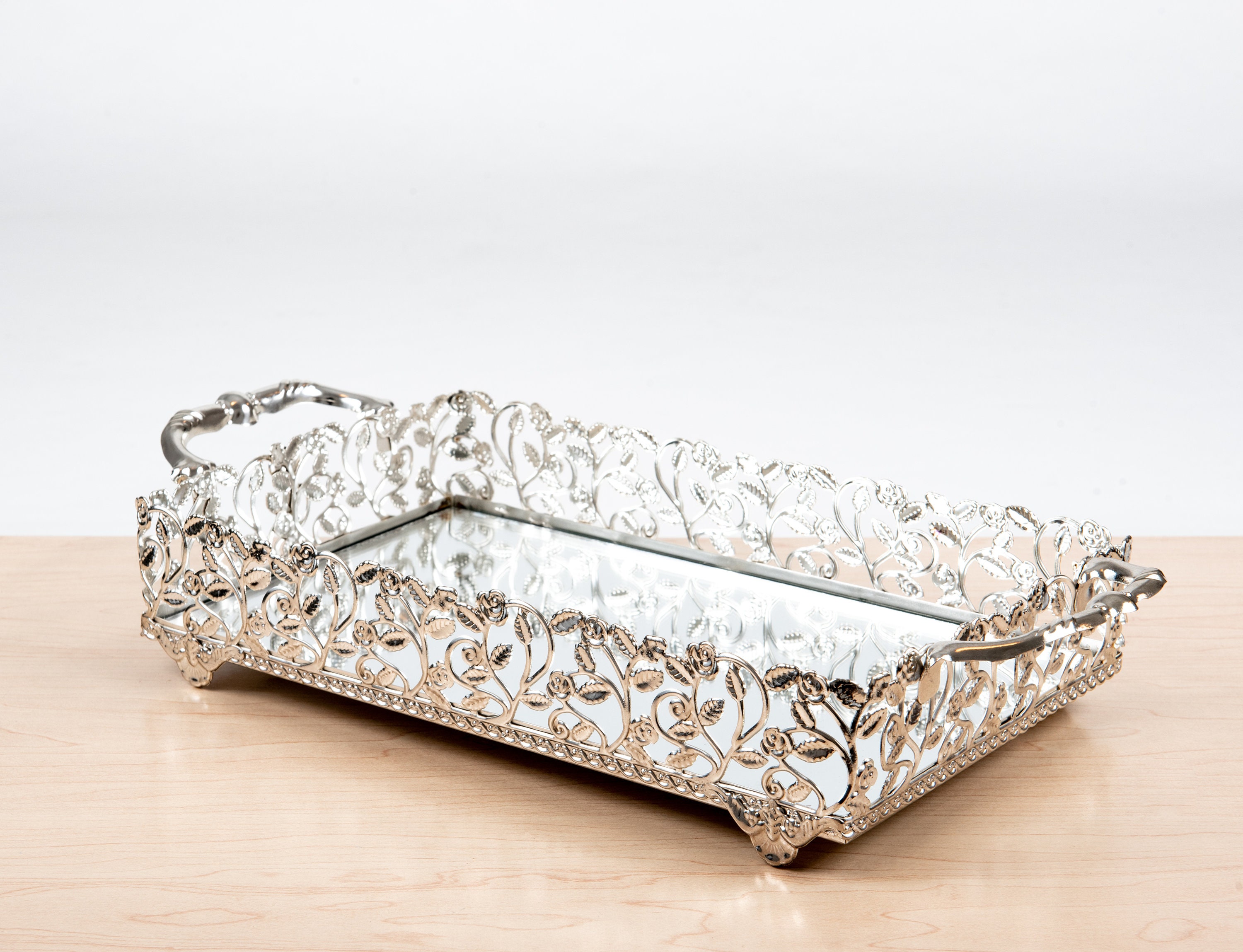Craftsman interior doors provide a classic timeless look to your home. The craftsmanship of these doors goes back to the early 1900s where many workers had begun to refine their skill set in the trade of producing wood doors. They were typically built off of simple tongue-in-groove frames with a single panel placed in the center, though you can find some with two or three panels. The arched panels can be either raised or flat. The look is straightforward and solid, adding character yet also remaining understated. Modern craftsman interior doors take inspiration from the traditional varieties, but may feature various other design elements including a mix of decorations, stiles, and rails. These doors are built to last, and strong enough to ensure security from potential intruders.Craftsman Interior Doors
During the 1930s, French interior doors were all the rage, especially in Europe. These doors feature intricate details, unique door pulls, and bold glass that allows natural light to shine through. With an Old World charm, French interior doors can add an extra layer of sophistication to any home's interior. The classic design includes slender panels and frames, with intricate geometric patterning. There are typically several panels, one at vertical and two at horizontal. These doors are usually made of woods or veneers, and may also come with several layers of glass. Today, French interior doors remain a popular style choice for many homeowners who are looking to add a touch of classiness to their entryway. The door’s traditional style blends in with a variety of home décor styles.French Interior Doors
Colonial interior doors were a popular style during the 1930s. These doors had a much more traditional look compared to some of the other popular styles. Unlike some of its contemporaries, the colonial door style incorporated a very conservative frame with split panels. The doors feature an American colonial style design, with symmetrical arrangements. Like many other varieties from the 1930s, these doors are fairly easy to install and share the same size as the existing doors in many cases. Colonial doors provide more durability, while their traditional designs match all interior settings.Colonial Interior Doors
The Victorian era inspired many designs of the 1930s, and this is certainly the case with Victorian interior doors. These doors feature a sweeping arch pattern that draws the eye up and down, along with lovely paneling to provide a luxurious look. The panelled doors give off a stately aesthetic, and left the traditional single-panel door in the dust. Victorian doors have an unmistakable look and feel to them that is completely different from other door styles of the era. While the sweeping arch pattern is the main feature, Victorian doors also usually come with intricate details, nails, and hardware. Generally, these doors are made of hardwood, or can be found in a combination of hardwoods and veneers.Victorian Interior Doors
The mission style of interior doors are heavily inspired by the arts and crafts movement of the early 20th century, combined with traditional Spanish and Southwestern influences. These doors feature bold lines, square edges, and feature natural materials like wood and stone. Mission interior doors provide elegance and simplicity to any home with its minimal design. Mission interior doors have a raised panel design, which gives them a more solid look than flat panel varieties. These doors can come with a variety of trim pieces, decorative accents, and multiple colors, all of which help to give them an eye-catching design. With a mission interior door, you don’t have to worry about compromising your door’s security. Cedarwood is often used in the construction of mission door styles to provide additional strength and protection.Mission Interior Doors
The Tudor style of interior doors, which first became popular in the 1930s, has an unmistakable look and feel. These doors are more ornate and intricate compared to other varieties, featuring raised panels and intricate details such as decorative hardware and extra trim pieces. Tudor interior doors typically have two panels, one at vertical and one at horizontal. These panels have a beveled edge, and are often intricate geometric patterns. While traditional Tudor interior doors are made of oak, other wood varieties such as mahogany and cherry may also be used. Tudor interior doors provide a classic look that will never go out of style. Whether you’re looking for an old-world charm, or something more modern and edgy, these doors are sure to fit the bill.Tudor Interior Doors
Cottage interior doors, which were popularized in the 1930s, are a great choice for those looking for a more traditional design that won’t be out of place in any home. Cottage doors are simple, yet elegant, with a single raised panel and simple trim pieces. These doors provide an understated and classic look that fits right in with almost any room. Cottage doors are typically made of either wood or fiberglass, and are often white or a very light shade of stain. Many cottage doors also feature antique looking hardware, and can give a home an extra touch of character. The combination of a raised panel design and simple trim pieces give these doors an attractive look that will never go out of style.Cottage Interior Doors
Gothic interior doors are inspired by middle ages architecture, and features a unique and timeless design. These doors are built using complex moldings and elaborate trims. The panels incorporate curved elements like arches, and usually feature multi-paned windows. They also usually feature intricate carvings on the frame. Gothic interior doors often come with decorative details such as brass knobs and knockers. They also often come with beveled glass panels, allowing you to look through to the other room while maintaining a certain degree of privacy between the two. Gothic interior doors add a touch of style and class to any home, and are sure to turn heads. They also make a great statement piece when used as an entryway door.Gothic Interior Doors
The Deco era inspired many interior designs in the 1930s, and this is certainly the case with Deco interior doors. These doors feature linear shapes and strong lines, combined with bold geometric patterns. The look is sleek and modern, yet also timeless in its beauty. The Deco style doors aren’t just for aesthetics. Some of the most impressive varieties come with solid hardwoods or reinforced steel core. Even though these doors can provide plenty of security, they don’t sacrifice the look of the home. They often feature Art Deco-inspired hardware and designs that still look modern today. Deco doors encompass the beauty of design and are sure to be a hit with any modern homeowner.Deco Interior Doors
The Art Moderne style of interior doors became popular in the 1930s, and features a unique combination of glass and metal. The doors have a bold and powerful style, and incorporate elements of art deco, streamline, and modern design. The glass panels can range from being full length, or small panes atop the door. These doors are typically made of metal, and come in a variety of colors. Depending on what door you choose, features like side-light windows, intricate molds, and door pulls can give the doors an added touch of sophistication. The panels are usually framed by either stainless steel or aluminum. For homeowners looking for a more modern touch, Art Moderne interior doors are the perfect choice. These doors can provide plenty of security while still complimenting any home's décor.Art Moderne Interior Doors
Classic 1930s Interior Door Styles
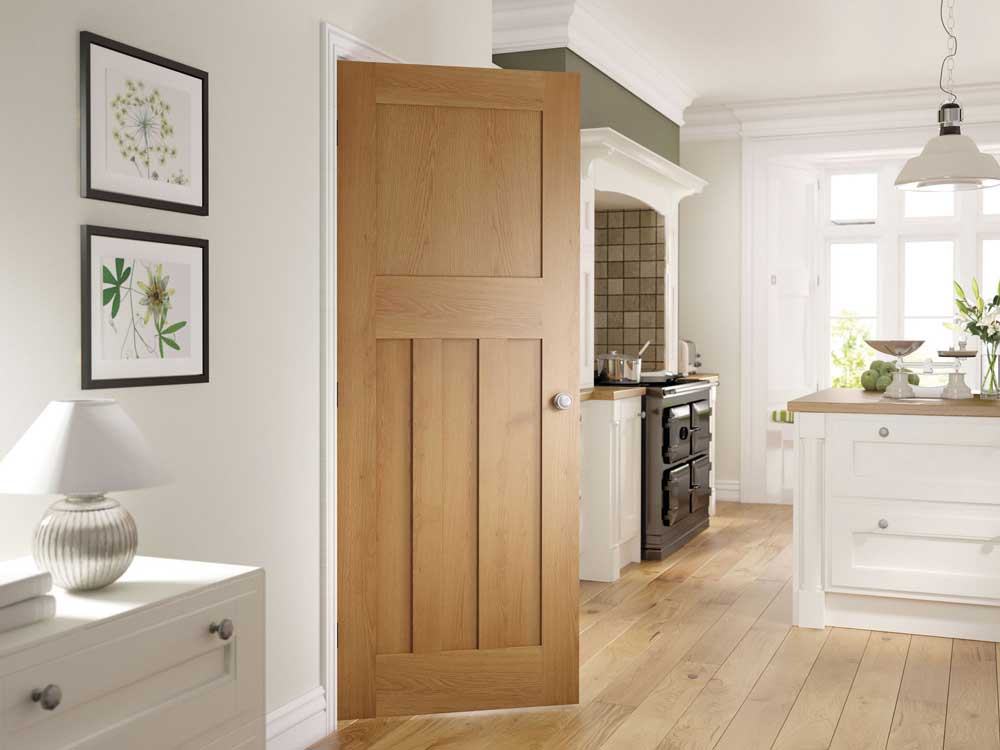 The 1930s was a time of stylish expression for 1920s homeowners looking to upgrade their spaces. At this time, the demand for more luxurious and grand designs increased, as people allowed themselves to think a little more creatively. In terms of interior doors, the 1930s saw some of the most aesthetically pleasing designs and materials.
The 1930s was a time of stylish expression for 1920s homeowners looking to upgrade their spaces. At this time, the demand for more luxurious and grand designs increased, as people allowed themselves to think a little more creatively. In terms of interior doors, the 1930s saw some of the most aesthetically pleasing designs and materials.
Traditional Three-Panel Doors
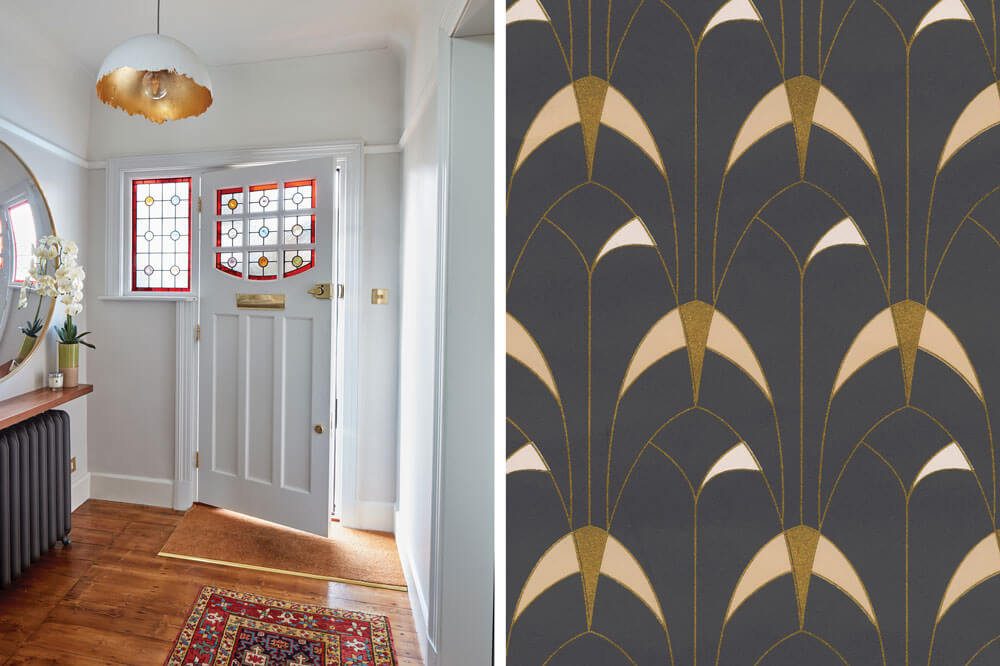 Traditional three-panel interior doors are classic 1930s styles for homeowners looking to achieve a vintage atmosphere. Often featuring six panels of glass, they usually range from four to six feet in height and two to three feet in width. They were most popular during the early 1930s.
Traditional three-panel interior doors are classic 1930s styles for homeowners looking to achieve a vintage atmosphere. Often featuring six panels of glass, they usually range from four to six feet in height and two to three feet in width. They were most popular during the early 1930s.
Craftsman Five-Panel Doors
 Craftsman five-panel doors were another popular design during that period. These doors had small, glass insets at the center and the top of the door, while the other three panels were filled with wood. The glass portion was small enough to be easily covered by curtains, making them much more privacy-friendly than the three-panel door.
Craftsman five-panel doors were another popular design during that period. These doors had small, glass insets at the center and the top of the door, while the other three panels were filled with wood. The glass portion was small enough to be easily covered by curtains, making them much more privacy-friendly than the three-panel door.
Stained Glass
 If you wanted to make a big statement in your home, stained glass was the material to choose. These doors feature blocks of glass cut in intricate patterns and held together with metal frames. You can find some highly decorative designs from the 1930s. These door styles boost the look and feel of any room dramatically.
If you wanted to make a big statement in your home, stained glass was the material to choose. These doors feature blocks of glass cut in intricate patterns and held together with metal frames. You can find some highly decorative designs from the 1930s. These door styles boost the look and feel of any room dramatically.
Slab Doors
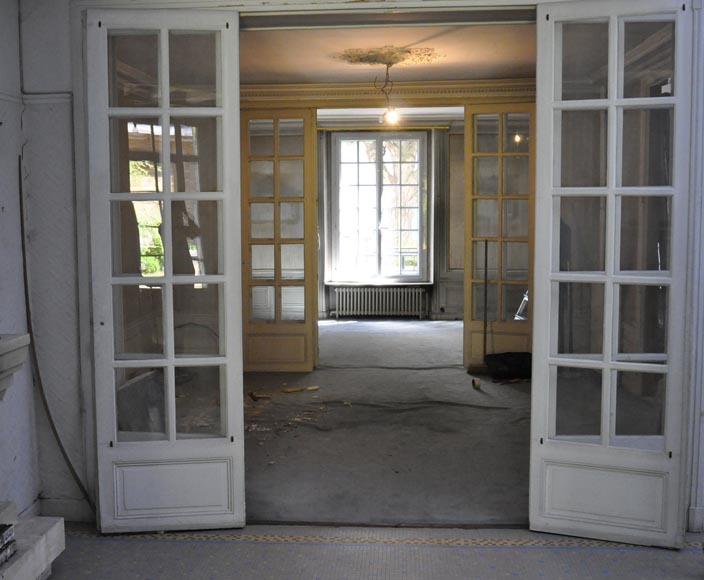 For a traditional look, a slab door is the perfect way to go. It is essentially a large, solid sheet of wood without any panels or other embellishments. You definitely won't get the wow factor of designs from other eras, but they tended to be cheaper and easier to maintain.
For a traditional look, a slab door is the perfect way to go. It is essentially a large, solid sheet of wood without any panels or other embellishments. You definitely won't get the wow factor of designs from other eras, but they tended to be cheaper and easier to maintain.
Louver Doors
 Louver doors are yet another classic style of the 1930s. This type of door features a series of angled wooden slats that are mounted into the frame. The purpose of the arrangement is to promote ventilation, as now the door prevents air from passing through. Louver doors are also excellent for quieting rooms of noisy neighbors or busy streets.
Louver doors are yet another classic style of the 1930s. This type of door features a series of angled wooden slats that are mounted into the frame. The purpose of the arrangement is to promote ventilation, as now the door prevents air from passing through. Louver doors are also excellent for quieting rooms of noisy neighbors or busy streets.













